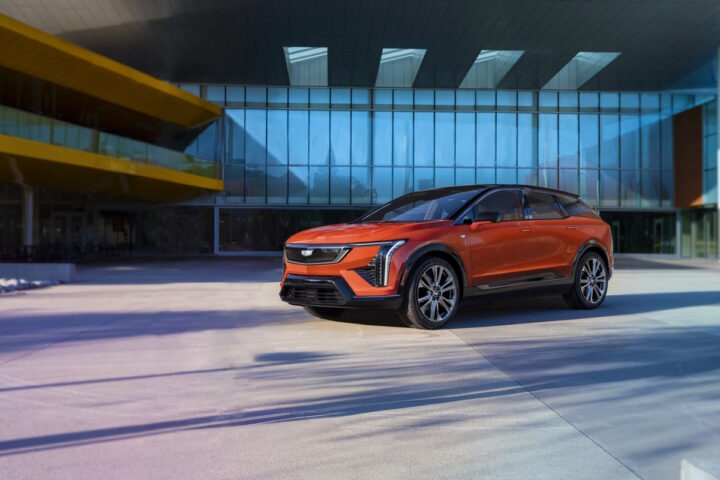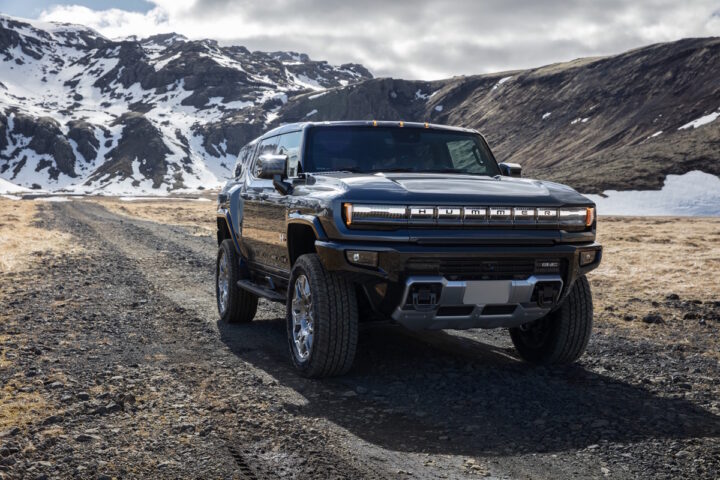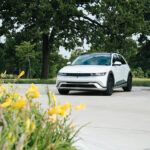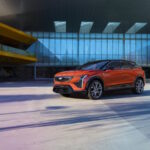by Michael Satterfield – 05/03/2020
Electric truck brand Bollinger Motors announced plans to produce an all-electric chassis cab and commercial truck platform. The Bollinger B2 Chassis Cab will be built a patent-pending Bollinger Motors all-wheel-drive chassis that is the bases for the current line of Bollinger pickups. The chassis cab will be offered in both two- and four-door cabs of multiple wheelbase lengths. The projected price of the chassis cab has not been released, but since the B1 and B2 variants have prices starting at $125,000, they will likely be one of the most expensive work trucks on the market.
The Bollinger B2 Chassis Cab’s unique features – including the 5,000-lb. payload and large energy source to power tools – make it perfect for businesses, small and large, commercial fleets will be able to reduce their overall cost of operation while buying a truck designed, engineered, and built-in the USA. The B2CC is an ideal option for municipalities, parks services, emergency response vehicles, airports, construction, landscaping, electricians, plumbers, security, non-tactical military, and more.
Bollinger claimed in 2017 that over 10,000 pre-orders had been placed for the company’s B1 Sport Utility Truck, but three years later, it doesn’t seem that outside of a handful of prototypes, it is unclear how ready for production, the small Michigan firm really is. According to the Bollinger Motors website, the B1 and B2 are supposed to be released in 2020, but no firm date on when retail customers will be taking deliveries has been announced. Bollinger claims that the B2 Chassis Cab will be available in late 2021 in both full-cab and cutaway-cab variants.
I have been puzzled about who the buyer is for the Bollinger since I first saw the original prototype in 2017. As someone who once sold fleet trucks to cattlemen and farmers, I can tell you they won’t be adopting an electric truck anytime soon. With the price of an F450 or Chevrolet 4500 series cab and chassis work truck coming in around $50,000 before incentives, it is going to be hard to make the case for the $100,000+ B2. While I personally know that the fuel economy drops with a loaded-down service body full of tools, it’s not going plummet like the range of an electric truck will once you start adding weight. With an estimated EPA range of 200 miles, my best guess is that a fully loaded work truck would get somewhere around 75 miles of range if you drive carefully. Let alone how much range will be eaten up by the power tools being used during a service day?
Bollinger claims that the trucks will charge in 10 hours on Level 2 (220v) or 75 minutes at a Level 3 (DC Fast) charger; But as I discovered with my recent adventure in the I-PACE even medium-size cities don’t have a lot of infrastructure to support rapid charging. So for a college campus or small park, it might function well, but for emergency responders, construction, landscaping, plumbers, or anyone in a rural community, I doubt a $125,000 truck is going to make a lot of sense.
I saw the latest versions of the Bollinger B1 and B2 at the Los Angeles Auto Show in 2019 and while improved, I still felt that fit and finish of the show vehicles weren’t impressive for a truck that has to go up against a Ford F-450 Limited or a GMC Sierra HHD Denali, both of which offer more towing/payload capacity, luxury, and technology for less money. While at the show I heard the pitches from Bollinger, about how they expect ranchers and overlanders to buy their trucks, but I don’t think they have made the case for a six-figure truck with limited range that doesn’t even have rolldown windows.
Short of a government mandate requiring state agencies to purchase an all-electric fleet I don’t think we will see widespread adoption of the electric heavy-duty service vehicles anytime soon. Most business owners I know who make their living from their vehicle don’t have the luxury of being able to (at minimum) wait over an hour to head out to a job site, only to hope that there is a Level 2 charger when they get there so they can make it to the next job or back to home.
If Bollinger honestly believes that their chassis cab can stack up against a comparable diesel pickup I would love to get a few of my fellow auto writers together and see what they can do in the real world, head to head. Like most electric vehicles, the Bollinger is a fun, quirky, second/third vehicle for people with a lot of disposable income and nowhere to be.























